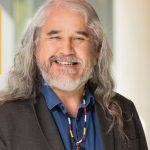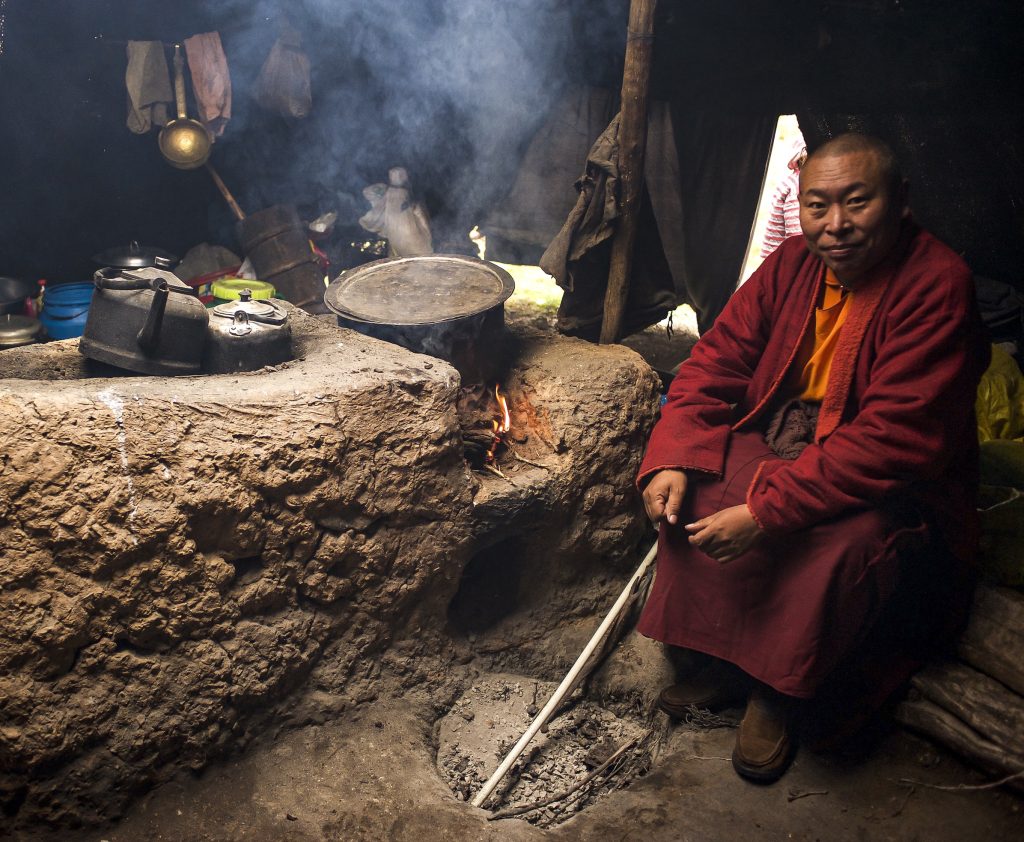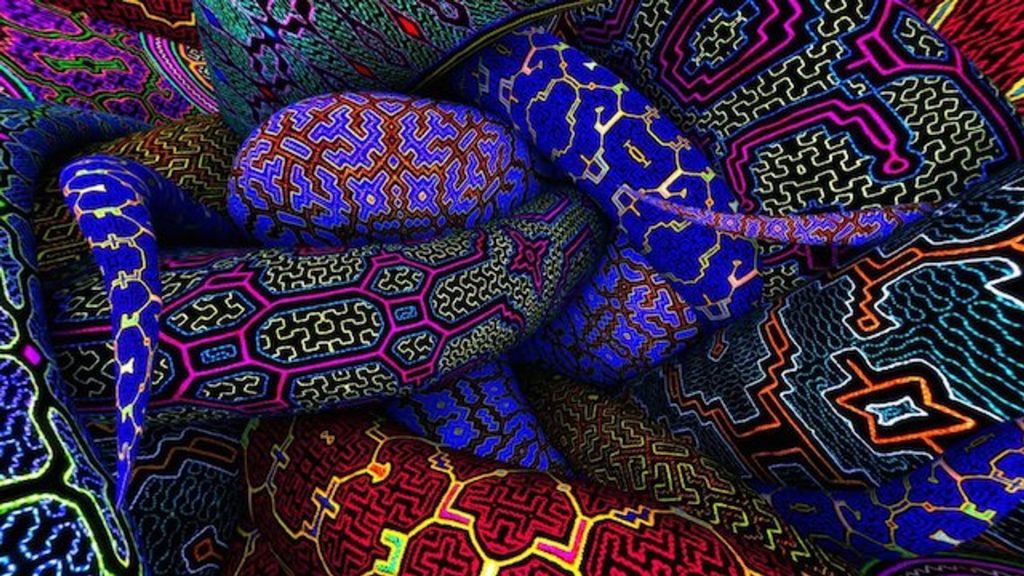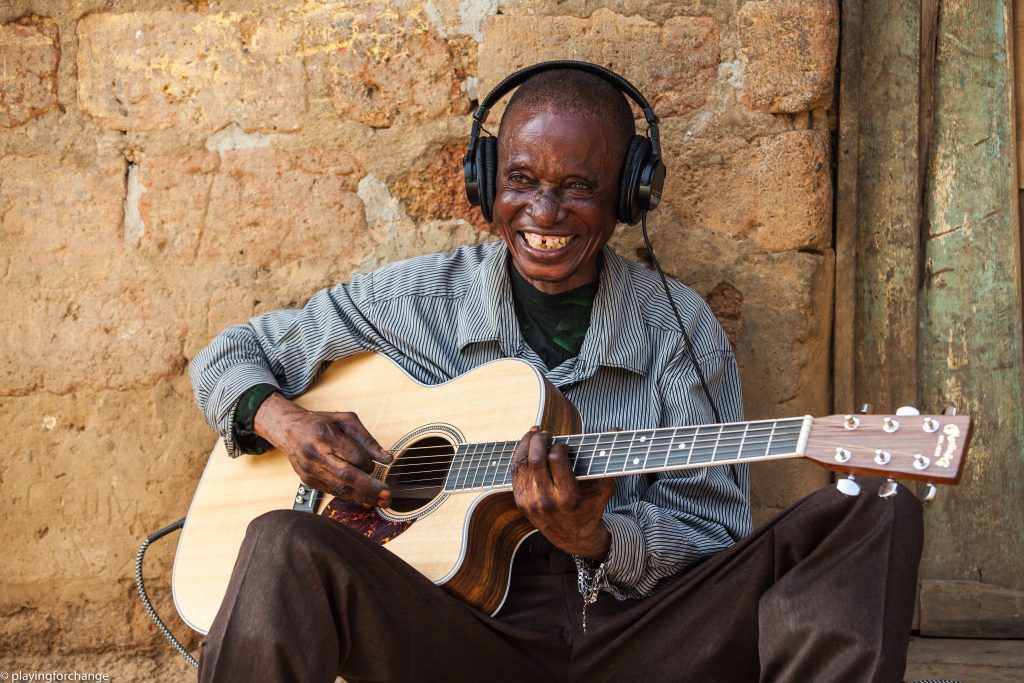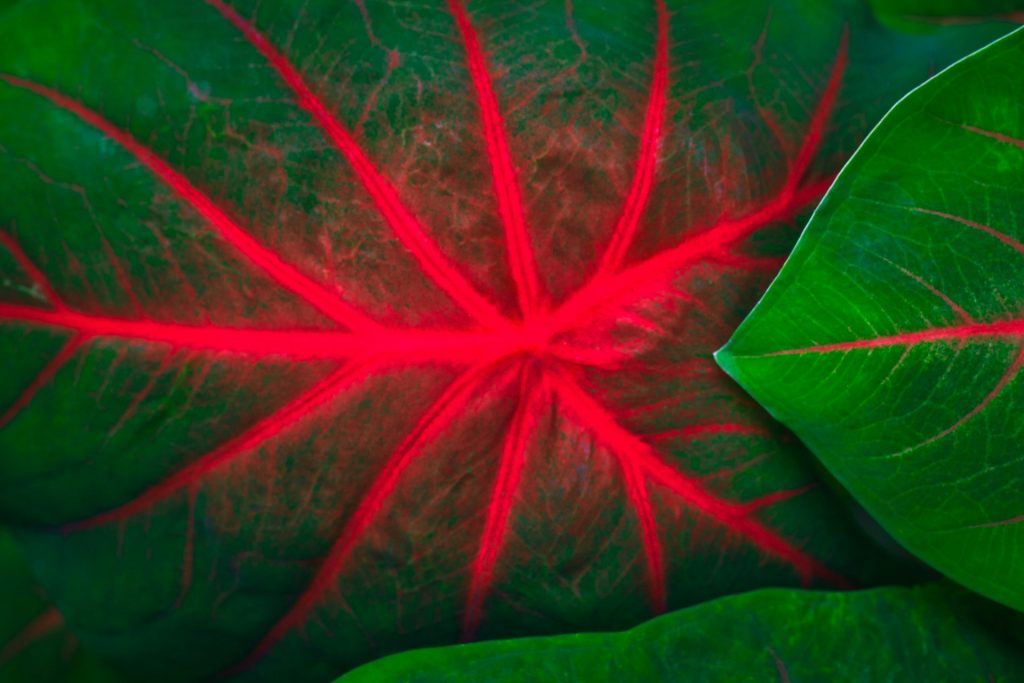Being Taught by Sacred Pain
When I mention the sacredness of pain, I am locating this argument at the interface of our rational and metaphorical minds. Therefore, my argument is not completely linear and draws on symbolic devices like stories and metaphors as ways to invite readers to look at pain differently, beyond what we have been over-socialized into through over-exposure to Western philosophies, ways of knowing and being, methodologies, institutions, and perspectives. These ways of knowing are now part of all of us, and decolonization does not necessarily mean banishing these knowledges from our being, but instead it may involve learning the lessons they came to teach, both good and bad, and integrating their medicines with other medicines.
Dr. Cash Ahenakew
If we look at this colonial over-socialization and over-exposure as a teacher, we can shift our position from being victims of a tragedy, to that of being observers of a painful poisonous phenomenon happening around and within us. Decolonization, in this sense, is not an event but a continuous, life-long process of turning deadly poison into good medicine available to all, based on the teachings of the trickster poison itself.
The first metaphor I invoke is that of the shine and the shadow of modernity (Ahenakew et al., 2014; Andreotti, 2012; Mignolo, 2000; 2011). Mignolo defines modernity as a local (European) ‘imaginary’ (the container that determines what counts as normal, natural, real, valuable and ideal) that turned into a global design, which started in Europe with the incorporation of the “Americas” into the trans-Atlantic trade circuit. This imaginary is driven by the desire for a linear, seamless and teleological notion of progress, as well as human agency, and all-encompassing (objective and totalizing) knowledge used to engineer and control an effective society through rationality, science, and technology. Mignolo talks about the fact that for us to believe that modernity is good and “shiny,” we have to deny that it depends on violence, exploitation, and expropriation (its “darker” side) to exist. In other words, violence is the condition of possibility of modernity. In this sense modernity is both grounded on violence as well as on the fantasy that we can objectify and control reality through rationality in order to engineer a perfect society.
Mignolo says that the effects of the darker side of modernity, such as war, poverty, hunger, and environmental destruction, are perceived by those who champion modernity’s shine as a lack of modernity that needs more modernity to be fixed. For example, globally we believe that more capitalism, Western schooling, and modern development are necessary to fix the problems of the so-called “Third World.” However, these problems were created and are maintained precisely through the exploitation of modern capitalism and the expropriation of colonialism, and through modern development (neo-colonialism). In addition, these problems are exacerbated by the universalization of Western schooling as a form of cognitive imperialism (Battiste, 1998).
Similarly, here in Canada, we believe that more money, more credentials, and more positions of power for Indigenous people in Western institutions and corporations will create a more just society. We forget that what is called inclusion in an inherently harmful system requires the expansion of violence towards the land, other species, and people somewhere else.
We are led to believe that we can think (or research) our way out of local and global problems through the same frames of thinking and modes of existence that created the problems themselves. This is evidence of our attachment to the shine of modernity, which necessarily requires the denial of its shadows; the fact that for us to have the shiny things we want, we have to export violence somewhere else. We forget that someone else pays the costs of our comforts and enjoyments (now perceived as entitlements).
The Indigenous communities in Guatemala affected by Canadian mining companies are a good example (Imai et al., 2007; Nolin and Stephens, 2011; Pedersen, 2014). The violence committed against these communities generates profits that flow back to Canada, fund our welfare system, subsidize our universities, and sponsor scholarships for students—in addition to the pain and suffering that mining inflicts on the land itself.
Even the act of writing this article is complicit in the suffering of Indigenous people in Guatemala. Why do we insist on ignoring the violence we (systemically) inflict on each other and on the land? Why do we continue to want things that harm others? How is the pain that we are causing accounted for differently in Western onto-epistemology (ways of knowing and being) of individuality and in the Indigenous onto-epistemology of entangled relationality? And how can we experience these Indigenous ways of knowing/being of inter-being-relationality if we have been colonized by the ways of knowing/being that numb our senses to it?
We can imagine this numbing as a process of clogging. In an attempt to keep us feeling individualized and separate from the land-metabolism, modernity takes away our sense of the unquestionable value of life and instead creates a fundamental void that we associate with worthlessness. To feel a temporary sense of self-worth, we are made to produce stuff that modernity recognizes as valuable. To feel a sense of completion, we are made to accumulate stuff that we believe can fill the void. This stuff becomes an embodied prison, clogging our pores, our air, our blood, and our drain pipes, damaging our heart pump and blocking possibilities for us to sense and relate differently. We become addicted to feeling only what modernity wants us to feel and to imagining only what modernity wants us to imagine. And we start thinking that it is all there is to life.
The acknowledgement of our complicity in harm is really important. The socialization we receive within modernity is based on cognitive imperialism (Battiste, 1998), a form of knowing and knowledge that universalizes itself as the most advanced way of controlling reality—and that eliminates other possibilities, especially Indigenous forms of conscience and Indigenous languages. We all suffer from cognitive imperialism in different ways. For example, although I would like to think I am engaged in the lifelong and life-wide process of decolonization, I often fail. This failure humbles me and reminds me that this process of figuring out an entangled relationality is not just cognitive, conscious, or intentional; it is not something we can do without humility, generosity, patience, humour or (self) compassion. Neither is this an excuse for indulgence or complacency, which, by the way, I am very often also guilty of. This is not something that will be led by a courageous heroic righteous authority either.
What I mean is that decolonization is not something that can be done with arrogance, anger, or moral weapons pointing to the errors of others in denial of how others are part of us as well. As we harm others, we are harming ourselves and we will not be able to figure our way out of this individually or by focusing only on our communities. We need to consider our responsibilities to everyone and everything, because we are not separate. In this sense, there is no purity and way out (there is no outside). The only way towards somewhere else is through it, like a buffalo in a storm; with our heads down, but with eyes, hearts, flesh, and dreams wide open, without fear of looking at ourselves in the mirror and seeing what has been maimed, what calls for or offers compassion, what shouts for revenge, what has been turned into a weapon, and what yearns for wholeness, for reconnection.
I have used an image to animate this idea. From the perspective of entangled relationality, we are all part of the same body: humans, non-humans, the elements, the land, the ancestors (those who have been and those who will come again). Colonialism has worked like the (ongoing) severing of an arm; one hand of this body has tried (unsuccessfully) to cut off the arm on the other side, only maiming it. The arm is still hanging in there, all cells of that arm occupied in dealing with the situation of extreme pain. Some cells try to re-attach to the body, other cells try to numb the pain, still other cells are in necrosis trying to cut themselves off, and others reproducing the cutting against brother-cells in self-hate. You can imagine the scale of the problem. However, the other side of the body is in intense pain too, but it is also in denial, and therefore it numbs very differently, mostly in ways that defend the original severing of the arm. This numbing is based on strategies that justify the severing through the affirmation of self-importance, merit, superiority, benevolence, and exceptionalism, which validates a perceived entitlement to ownership, individualism, security, judgment, authority, and control.
Likewise, authors Duran, Duran, and Yellow Horse-Davis use the soul wound as a metaphor for the historical trauma I am referring to. They say that this wound involves the colonized, the colonizers, and the land itself, and that it can only be healed through a renewal of relationships, through a recognition that the wounding and the pain affects us all, and through an acknowledgement that numbing is not healing. However, there is a major challenge here for the healing process, because a modern onoto-epistemology of individuality and an Indigenous onto-epistemology of entangled relationality have different conceptualizations of pain, healing, well-being, and death (Ahenakew, 2011).
Dominant modern ways of knowing have conceptualized pain as an individual problem equated with suffering; healing as the elimination of pain; well-being as the absence of pain; and death as the end of life. Not surprisingly, people socialized into this way of thinking/ feeling are afraid of pain as they try to enjoy a pain-free life and avoid death. Meanwhile, many Indigenous ways of knowing conceptualize pain as something that is not individualized and that can have many functions; for example, it can be an important messenger, a visitor, a teacher, an offering, or a test.
From this perspective, well-being does not require the elimination of pain. Most importantly, suffering is related to turning one’s back to the message of the pain (of one’s body, of the land, of others) and, therefore, healing requires un-numbing and facing the messenger, facing the inevitability of pain, and developing the courage and resilience to have a relationship with it. This does not mean that people enacting this relationship with pain will not accept pain killers—they do—what it means is that they are not haunted by the fear of pain.
I often observe my modern self, the modern part of me, overtaken by cognitive imperialism when it is experiencing chronic pain. This part of me firmly believes in numbing precisely because it sees itself as small, weak, tired, and incapable of withstanding (more) pain. It feels it is going to be overcome by pain. And, if we can sense that we are really inter-related, this part inhabits all of us. But we have other parts too, and what I try to do is listen deeply to those as well. Another side of me wants to stop the pain, to exit this body, to go somewhere else, to return “home” (to leave the body), where there is no pain.
Adversity comes to Indigenous people from the moment we are born into settler colonial societies. Continuous macro- and micro-aggressions from settlers, stereotypes that either romanticize or see Indigenous peoples as deficient, performative expectations, exclusion and promises of inclusion, and recognition created to make settlers feel good about themselves are some of the things that become normalized for Indigenous people very early in their lives. The pressures most Indigenous people in North America face within communities marked by residential schools and intergenerational trauma make the task of healing practically impossible…
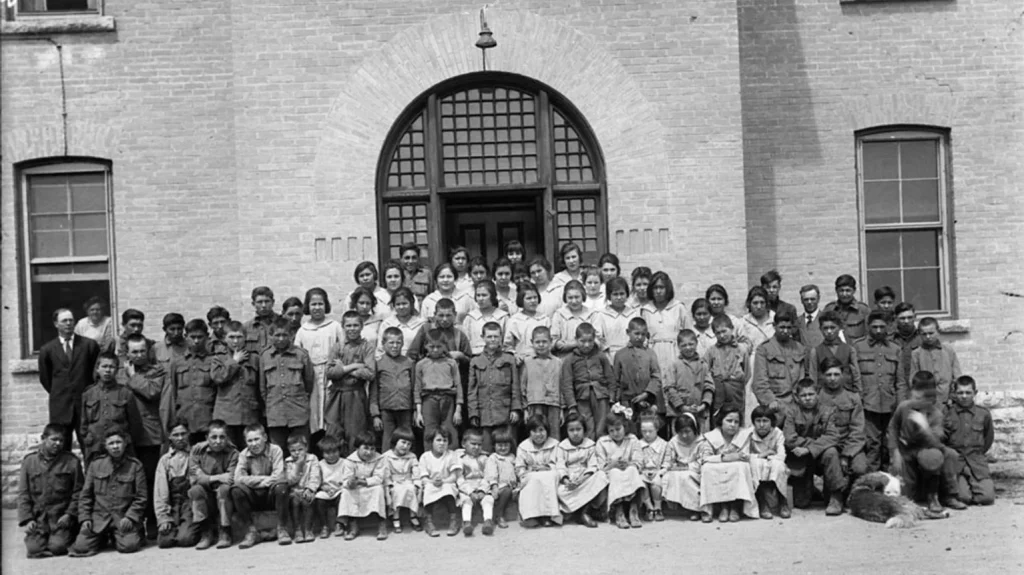
…The call that emanates from the land for healing and well-being, if picked up by even a barely functioning vital compass, can be very powerful. In my childhood this compass was kept alive by my loving mother, my sisters, my brothers, and by an extended family that reminded me through words and actions that the land wanted me to exist and that the world, despite all the pain, the cruelty, and the difficulties was still “home”. Therefore, my childhood and youth traumas and wounds, even though they involved poverty and violence, were not as devastating as those many other Indigenous people have experienced. This functioning vital compass set parts of my being in search of ancestral wisdom and traditional practices. These parts yearned for Indigenous ways of being and experiencing reality—experiences of non-linear being, for a steadiness of mind, for an expanding and collectivizing of the heart through ceremony. These parts of me wanted to surrender to the land and to welcome and hold sacred pain. I started using these practices as a form of neuro-decolonization. Voluntary pain is often necessary to remind us that, when connected, our (human and non-human) hearts are much larger than the pain we feel or have inflicted on others.
Indigenous pain and trauma impact not only the biological, physical, mental, social, or emotional domains of our being but also the spiritual one. The consideration of the spiritual domain is what is distinctive about Indigenous world views and experiences of sacred pain, healing, and well-being. However, I would like to argue here that what I call the spiritual is also reflected in our neurobiology—it is not an abstract concept. Despite its colonial origins and biases, neuroscientific research shows, for example, that people who meditate for long periods of time and achieve different states of consciousness present physical changes in their neurochemistry, neuro-functionality, and even in their neuroplasticity. In this sense, when we are talking about ways of being and experiencing reality, ourselves in/as the world, we are not talking about an intellectual choice of relationship, but about a different neurobiological configuration that opens up different possibilities of being affected and interpolated by everything around us—not just in abstract ways, but physically (and also spiritually). We are also talking about neurobiological capacities that are enabled or shut down by these affectabilities. In addition, if we are indeed entangled, and if this entanglement means we are a collective body, this neurobiological capacity extends beyond individual bodies.
This is the perspective many traditional healers work from when they are scanning and transforming dis-ease; they access the layer/field where we work as a collective neurobiology, a collective metabolism. In this sense, we are in each other. From this layer/field we can strive for balance in order to offer more balance back to the metabolism we are part of. However, we cannot achieve so-called purity, we cannot separate ourselves completely from the “bad” side, we need to treat the body as whole, including the good and the bad, the ugly and the broken. There is no good team versus bad team—there is one team, one body that is sick and self-harming.
This essay is from a booklet graciously available on the web. All footnotes are cited there.
https://decolonialfuturesnet.files.wordpress.com/2019/11/scarring_web1.pdf
This booklet is licensed under a Creative Commons Attribution 4.0 International license.
Deep gratitude to Gesturing Towards Decolonial Futures, “an arts/research collective that uses this website as a workspace for collaborations around different kinds of artistic, pedagogical, cartographic, and relational experiments that aim to identify and de-activate colonial habits of being, and to gesture towards the possibility of decolonial futures. Gesturing Towards Decolonial Futures (GTDF) is a practice that is multi-layered and rather difficult to explain, but we will give it a go.”
- It is about hospicing worlds that are dying within and around us with care and integrity, as well as attention to the lessons these deaths offer, while also assisting with the birth of new, potentially wiser possibilities, without suffocating them with projections;
. - It is about facing our complicity in violence and unsustainability and its implications with the courage of really seeking to connect with the collective pain, past, present and future;
. - It is about composting our individual and collective shit with humility, joy, generosity and compassion, trying to “dig deeper and relate wider”;
. - It is about holding space for difficult conversations and silences without relationships falling apart;
. - It is about recognizing and taking responsibility for harmful modern-colonial habits of being (in ourselves and around us) that cannot be stopped by the intellect, by good intentions and by spiritual, artistic or embodied practices alone;
. - It is about interrupting modern-colonial addictions, in particular addictions to the consumption of knowledge, of self-actualization, of experiences, of critique, of alternatives, of relationships and of communities;
. - It is about recognizing that we are an extension of the land-metabolism that is the planet, not the other way around, preparing for the end of the world as we know it, and showing up differently so that “another end of the world” becomes possible;
. - It is about dis-investing in desires for unrestricted autonomy, authority, certainty, control, protagonism, purity, popularity, superiority and validation to create space for acccountabilities, for response-abilities, for exiled capacities and for deeper intimacies;
. - It involves learning and unlearning, disarming and de-centering, dethroning and de-arrogantizing, detoxifying and decluttering, mourning, grieving and healing, digesting and metabolizing, seeing ourselves as cute and pathetic, so that the wider metabolism can breathe and move more easily within and around us;
. - It involves loosening our attachments to our self images and to what we think we want, so that we might instead step up, own up, clean up, grow up, wake up and show up to do what is really needed, whether or not it fits with our personal agendas
https://decolonialfutures.net/


